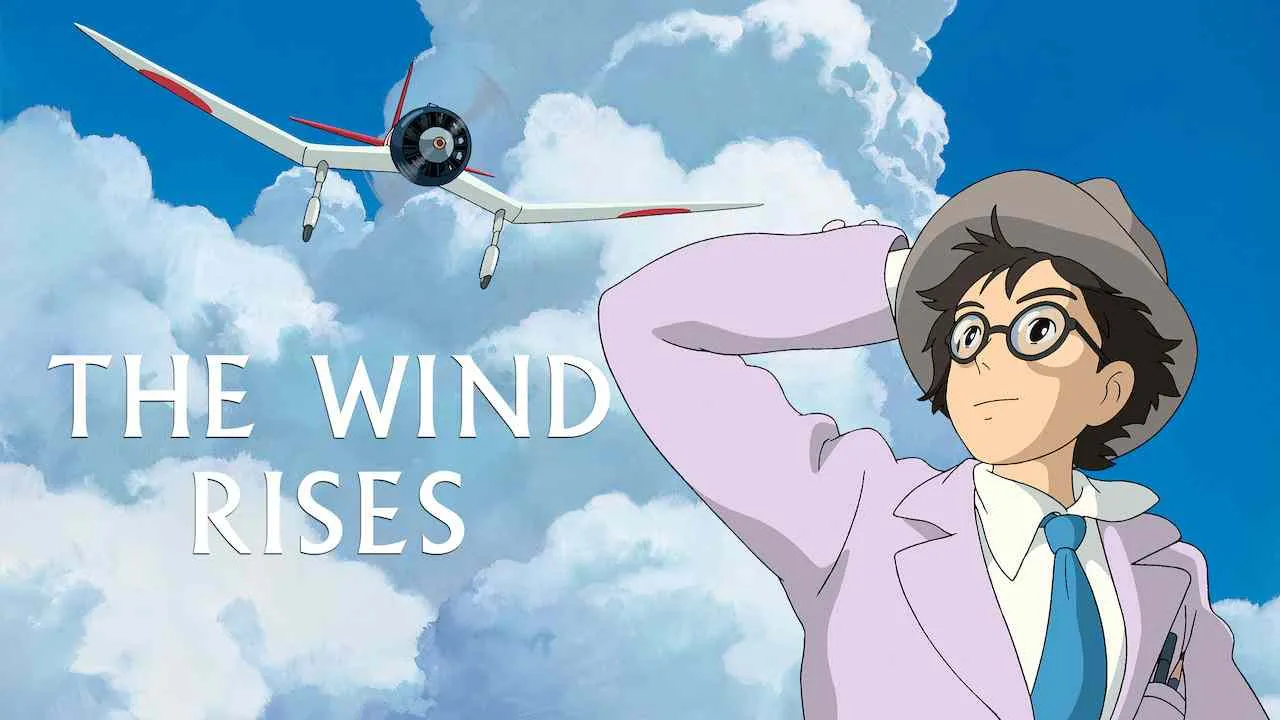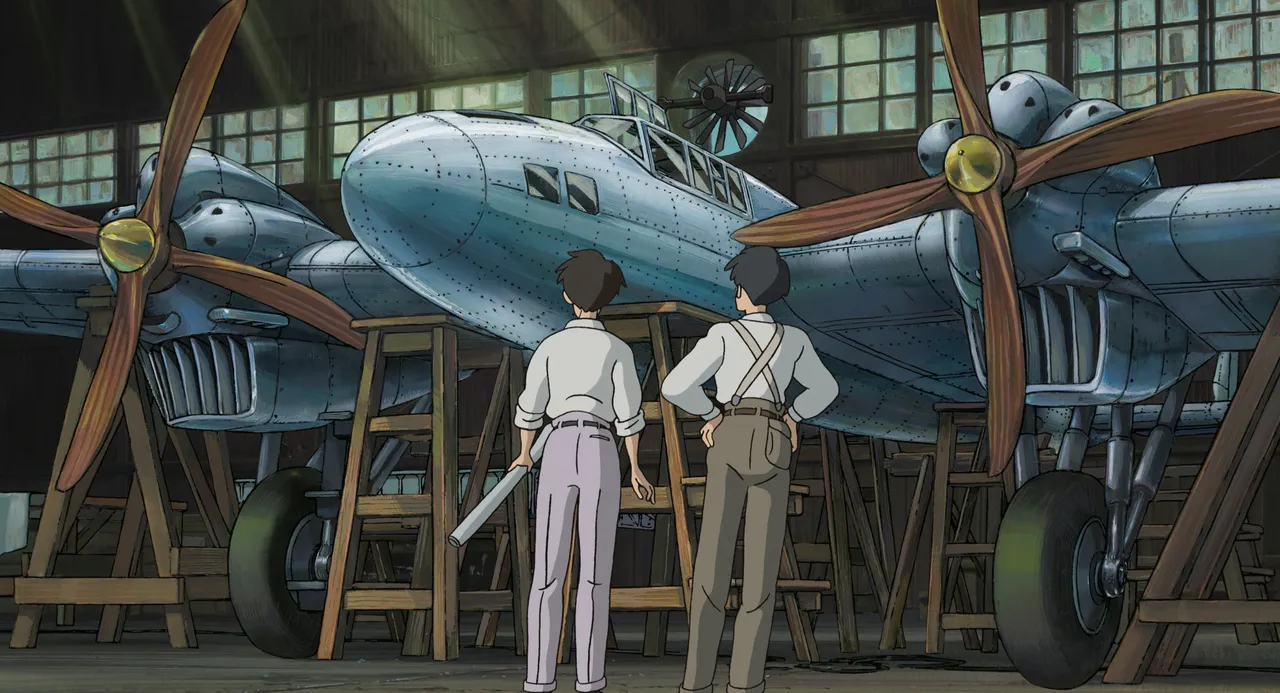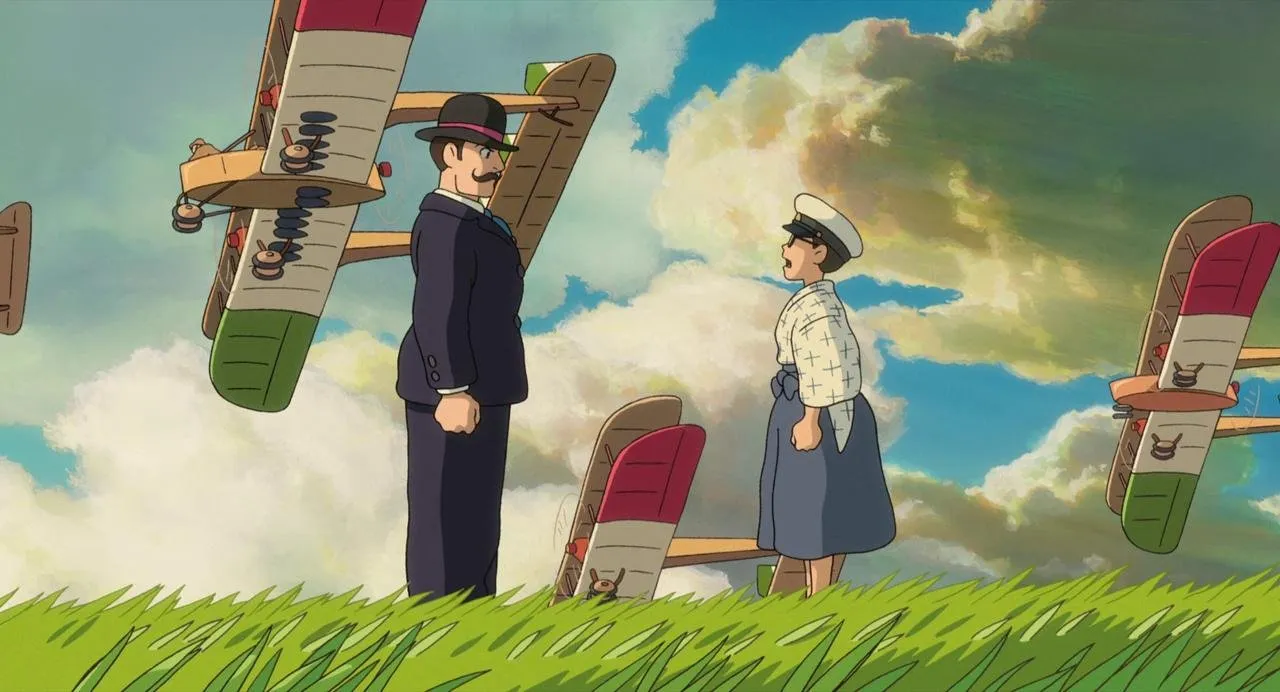
Source
Plot
This most recent Miyazaki movie's plot is quite straightforward; it is based on a real-life person, there is no magic, and there are no unexpected turns. Despite this, the movie has the hallmarks of Miyazaki's direction, including a strong main character and a strong, self-assured, and determined female character in Nahoko.
Jiro, the main character, is the most popular male character in all of the master's movies because he is highly composed, motivated to realize his ambition, and even though he is a meticulous aeronautical engineer, he also makes room in his life for romance and fantasy. In reality, Jiro frequently has vivid dreams in which he converses with Giovanni Battista Caproni, the Italian engineer who created the first airplane. Jiro is told in a dream by Caproni that despite his nearsightedness, he may still devote his life to designing airplanes.
The wind is surely another fantastic character in the movie; it is because of the wind that Jiro first meets Nahoko and falls in love with her, and it is the movement of the wind that motivates Jiro to create his ideas.

Source
Why you should watch it?
Hayao Miyazaki's passion for flying is well-known and undeniable. The son of an aeronautical entrepreneur, Hayao would have liked to fly planes himself but, like the Jir in his most recent film, eye problems prevented him from doing so.
As a result, he "limited" himself to flying with his imagination and making the majority of his drawn characters fly, in some way. It immediately comes to mind small and large masterpieces like Porco Rosso, The Castle in the Sky - Laputa, or Nausicaä of the Valley of the Wind, where flying machines of various types are used, if not actual airplanes as in the first title mentioned, but also in many other short and feature films the thrill of flight is part of the experience, perhaps with the help of magic: from Kiki Home Deliveries to My Neighbor Totoro, via Spirited Away. However, Miyazaki delivers his genuine artistic and spiritual legacy in The Wind Rises, fully cognizant that this would (sadly) be his final, outstanding work.

Source
The wind rises plays with the cathartic power of contrast, somewhat like the very Nature he attempts to represent and pay homage to, and oscillates between good and evil, hopes and fears, dream and nightmare, fantasy and reality of a character who survives himself and History on the strength of his own passion and convictions. Additionally, Miyazaki transforms the protagonist's funambulistic nature into the admirable ability to enter and exit the dreamlike scenarios that his mind creates because he is unable to include purely fantastical imagery in the movie. This condemns him to a life dedicated to beauty and work but cut off from the rest of the world ("a man is he who does a man's work").
The attention to detail injected into the design of the airplanes indicates Miyazaki's lifetime passion of the material and is evidence that this film is a project he has long dreamed of. The wind rises is visually stunning. The author can also allow himself the luxury of disobeying the laws of physics in the dream scenes, which might have benefited from some trimming. The idea that the flying machines are actually living, breathing things that dart and breathe is what most strikes the audience, and this is accompanied by an amazing work on the sound, which uses human voices to render the noises of the propellers as well as the rumble of the earthquake that destroys Tokyo in the opening sequence.

Source
The portrayal of The Wind Rises's saddest moments exhibits such finesse and inexhaustible poetry that it is impossible not to be captivated and simultaneously frightened by the force of the visuals that move across the screen. The only problem with the movie is that it might be a little hostile to younger audiences (who at least had the adventurous subtext in other historically complex movies like Princess Mononoke to draw from), and even older viewers might not understand some subtleties related to the Japanese mentality of the time and thus miss part of the work's meaning, which is closely related to the characters' psychological introspection. Hayao Miyazaki's goodbye to the art of feature films, while technically flawless and enhanced by the incomparable Joe Hisaishi's music, could not be more beautiful and heartfelt.
Rating
I know that I might be a little biased into judging a movie about airplanes (since I am an aerospace engineer) but I always try to be fair in my reviews and I have seen a lot of sh***y movies about aviation. This movie instead is great and captures the essence of being an engineer and all the dreams and effort that this brings along. And of course this is only a small part of it... there a lot more to see...
My personal vote is:
9.0/10


